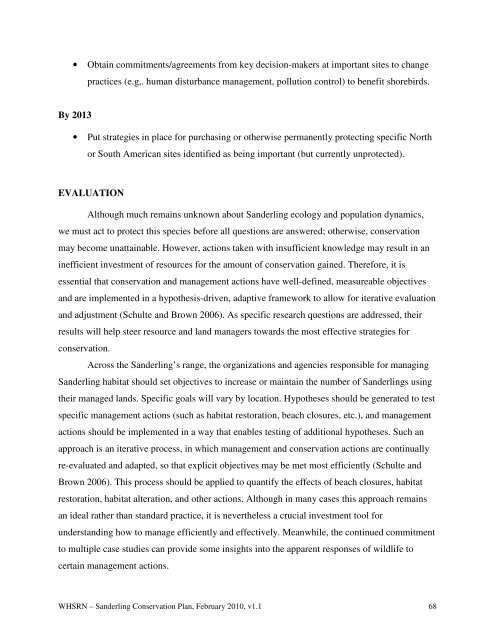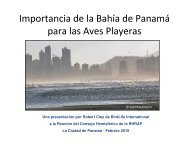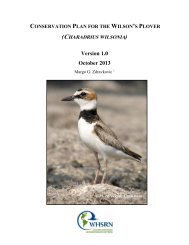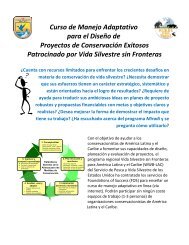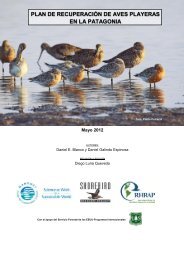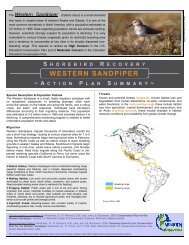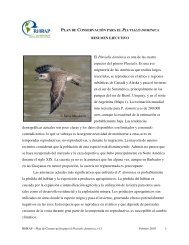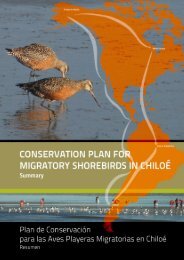Sanderling Plan - Western Hemisphere Shorebird Reserve Network
Sanderling Plan - Western Hemisphere Shorebird Reserve Network
Sanderling Plan - Western Hemisphere Shorebird Reserve Network
You also want an ePaper? Increase the reach of your titles
YUMPU automatically turns print PDFs into web optimized ePapers that Google loves.
• Obtain commitments/agreements from key decision-makers at important sites to change<br />
practices (e.g,. human disturbance management, pollution control) to benefit shorebirds.<br />
By 2013<br />
• Put strategies in place for purchasing or otherwise permanently protecting specific North<br />
or South American sites identified as being important (but currently unprotected).<br />
EVALUATION<br />
Although much remains unknown about <strong>Sanderling</strong> ecology and population dynamics,<br />
we must act to protect this species before all questions are answered; otherwise, conservation<br />
may become unattainable. However, actions taken with insufficient knowledge may result in an<br />
inefficient investment of resources for the amount of conservation gained. Therefore, it is<br />
essential that conservation and management actions have well-defined, measureable objectives<br />
and are implemented in a hypothesis-driven, adaptive framework to allow for iterative evaluation<br />
and adjustment (Schulte and Brown 2006). As specific research questions are addressed, their<br />
results will help steer resource and land managers towards the most effective strategies for<br />
conservation.<br />
Across the <strong>Sanderling</strong>’s range, the organizations and agencies responsible for managing<br />
<strong>Sanderling</strong> habitat should set objectives to increase or maintain the number of <strong>Sanderling</strong>s using<br />
their managed lands. Specific goals will vary by location. Hypotheses should be generated to test<br />
specific management actions (such as habitat restoration, beach closures, etc.), and management<br />
actions should be implemented in a way that enables testing of additional hypotheses. Such an<br />
approach is an iterative process, in which management and conservation actions are continually<br />
re-evaluated and adapted, so that explicit objectives may be met most efficiently (Schulte and<br />
Brown 2006). This process should be applied to quantify the effects of beach closures, habitat<br />
restoration, habitat alteration, and other actions. Although in many cases this approach remains<br />
an ideal rather than standard practice, it is nevertheless a crucial investment tool for<br />
understanding how to manage efficiently and effectively. Meanwhile, the continued commitment<br />
to multiple case studies can provide some insights into the apparent responses of wildlife to<br />
certain management actions.<br />
WHSRN – <strong>Sanderling</strong> Conservation <strong>Plan</strong>, February 2010, v1.1 68


